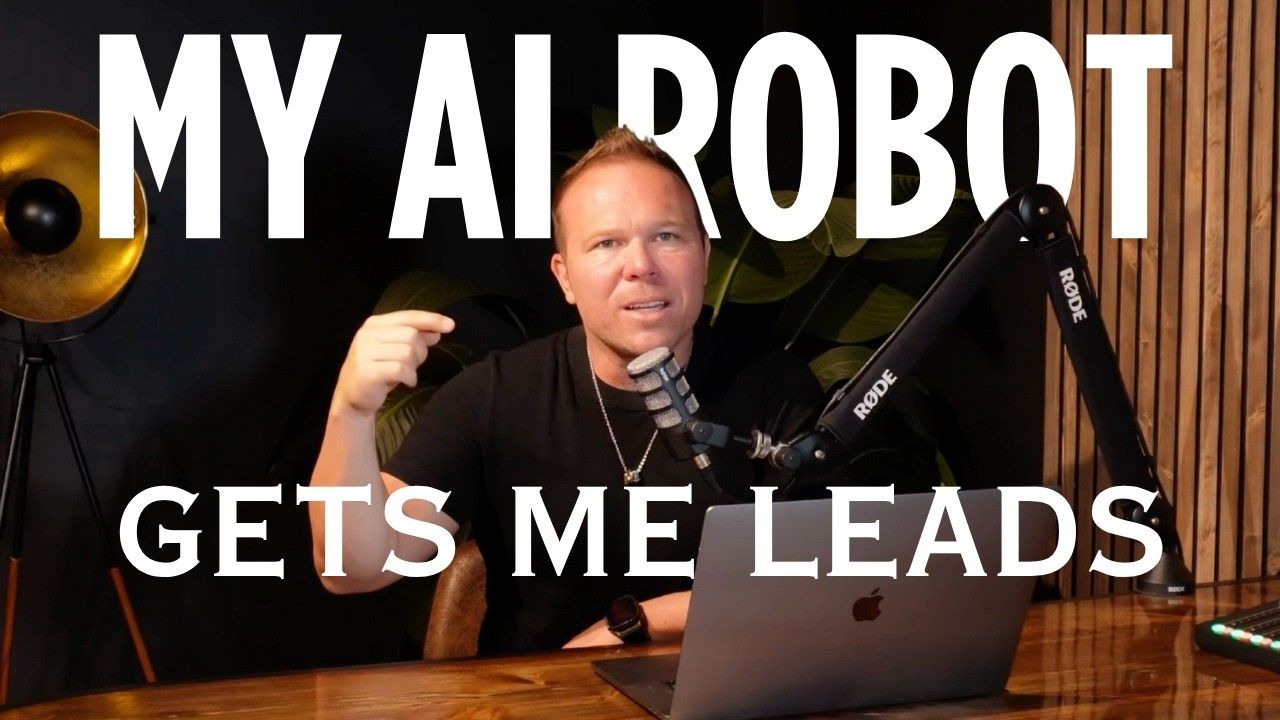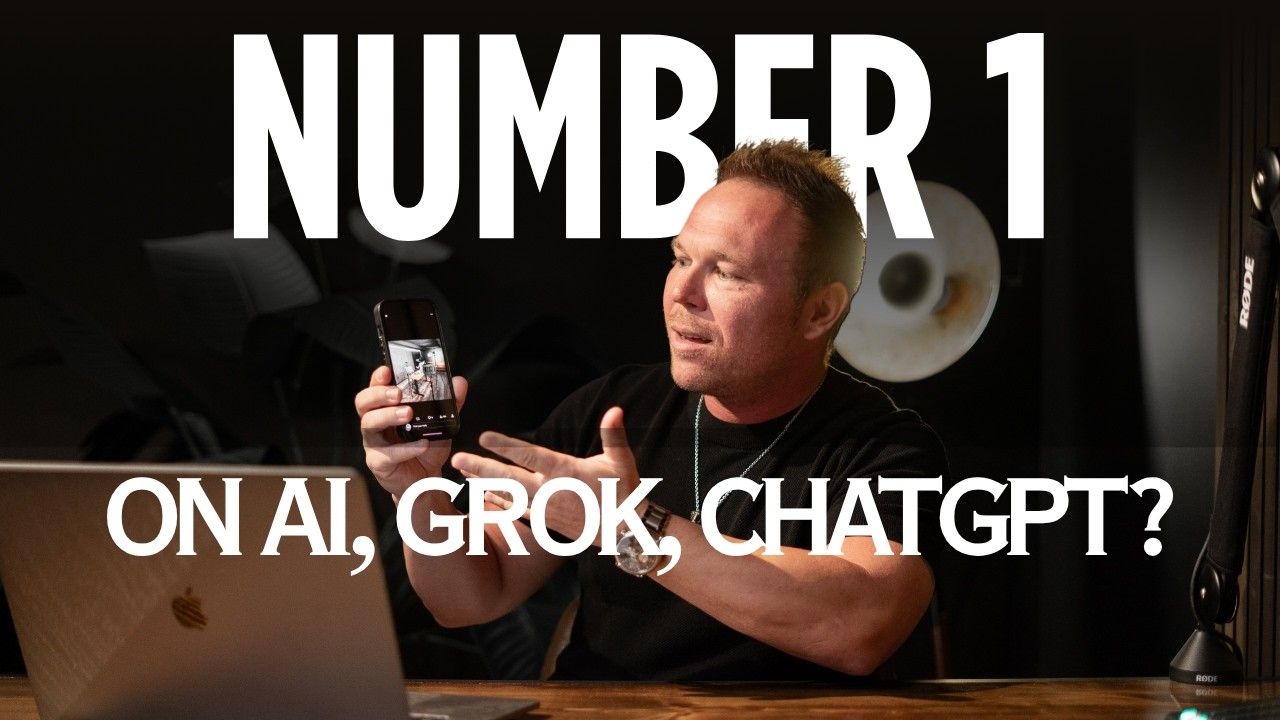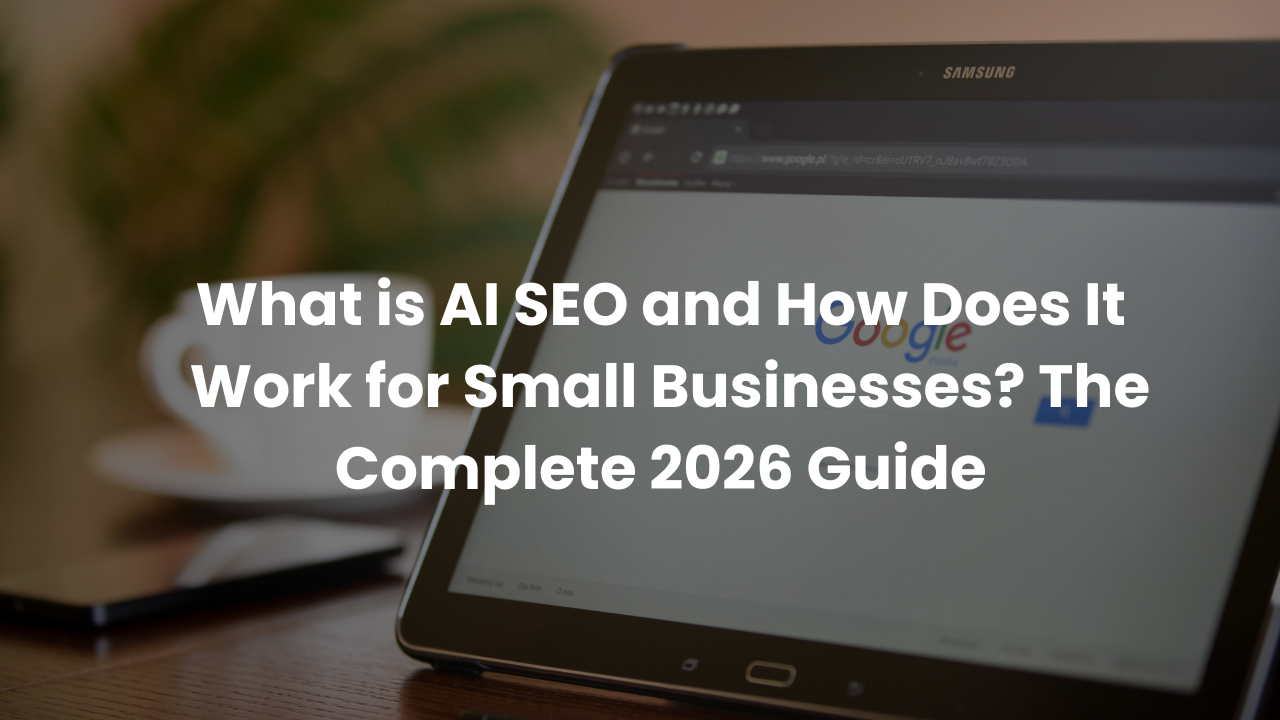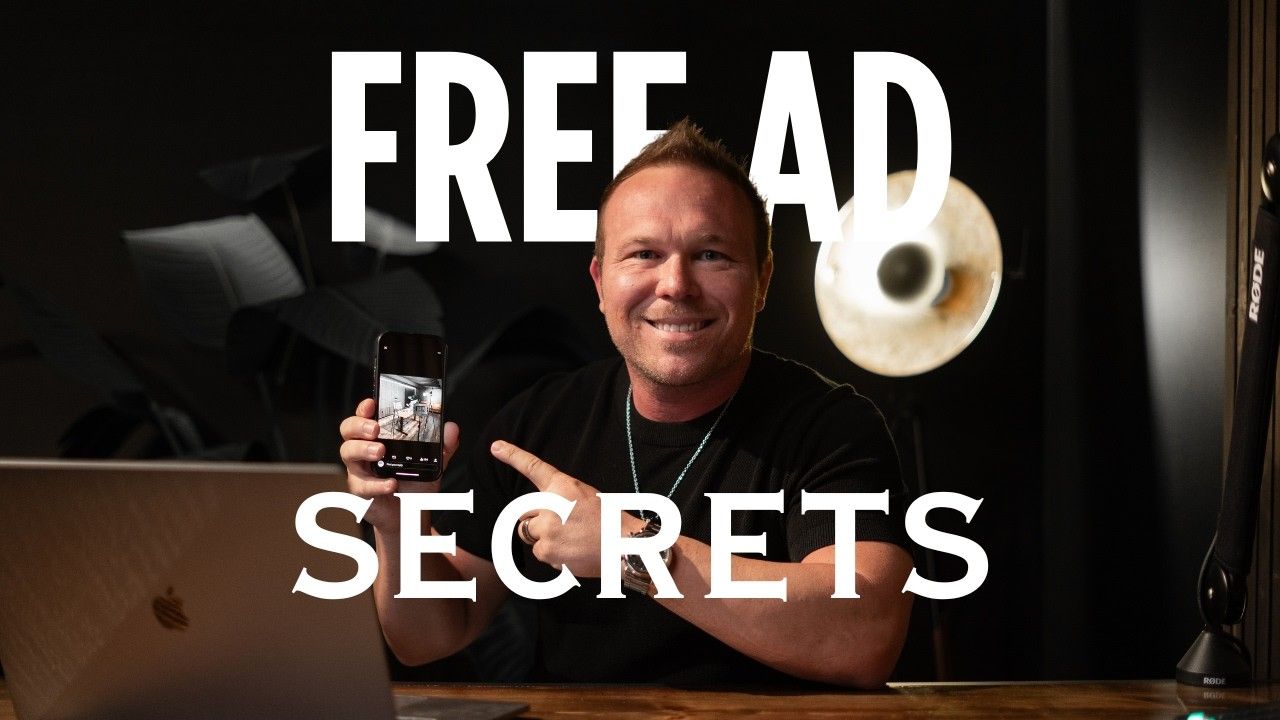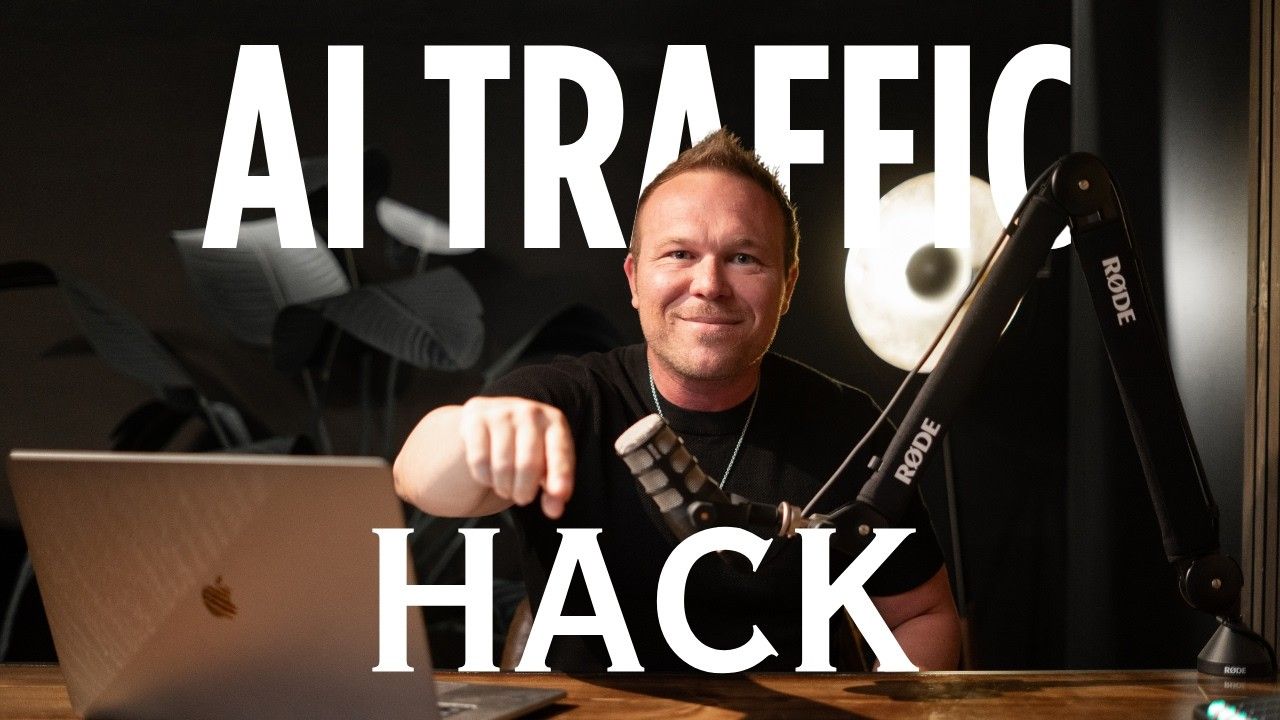How to Script your Videos to Sound Natural on Camera: The 7-Step Structure That Eliminates Nervousness
I've been making videos since 2017 - that's 7 years and over 750 videos. In that time, I've developed an exact structure that helped me get over being nervous, being scared on camera, and actually being able to produce these videos much easier. My name is Brad Smith, owner of Automationlinks, and I've been doing this marketing stuff for the last 10 years. These video strategies have helped me work with over 2,500 brands since I started.
- Quick Answer: Use a structured approach with bullet points instead of full scripts, treat yourself as the educator rather than entertainer, and embrace imperfections while maintaining eye contact with the camera.
- Time Required: 30-60 seconds for intro, then natural flow with bullet point guidance
- Best For:
Business owners, entrepreneurs, and content creators who want to sound natural while staying on message
Why Most People Struggle with Video Scripts
The biggest mistake I see people make is trying to read from a teleprompter or memorize every single word. In fact, I don't read from a teleprompter - I can mess up right now and be fine, just start over, hit my pain points... See I messed up right there, hit my bullet points and get to the point, share my screen and help others.
If you think of yourself as the helper, the educator, the one providing value, these videos don't have to be perfect because you really have two choices online: you can be the entertainer or the educator.
The Natural Video Structure That Actually Works
Here's my exact system that I use for every single video. If you want this full system, comment "system" down below and someone from my team will send you over my complete prompt and script structure.
Step 1: Topic + Pain Point + Intro (30-60 Seconds)
The first step is coming up with the topic, hitting the pain point, and then doing your intro. This is usually pretty much off the cuff for me. What I want to do is find something that's super valuable and that's helpful for people, and then what I want to do is say that I'm going to talk about that at the beginning.
Just like at the beginning of this video, I talked about "in this video I'm going to help you get comfortable on camera." That's what you want to do - you want to answer that thing, make sure the video is relevant for what the person searched for.
Next thing you want to hit is the pain point: "Are you struggling with this? Are you having trouble with this? Then I'm going to help you."
Then the intro: this is who I am, this is how I help, and this is where we're going to get.
Key Point: Your intro should directly address what people searched for within the first 30-60 seconds to maximize viewer retention.
Step 2: Maximize Watch Time and Viewer Retention
What we want to do is make sure we maximize watch time and the viewer retention. That's how we want to structure these. We want to think about "what's going to get somebody to get to at least 30 seconds, 60 seconds, 90 seconds?" That's really going to be key.
If you start off your video and you start talking about something that has nothing to do with your title or your thumbnail, people are just going to keep scrolling and exit right away. You want to keep your intro as short and engaging as possible to get to the point.
People want the concise content. Have you ever read comments under videos where they say "It took you 10 minutes to get to the point?" You want to get to the point within the first 30 to 60 seconds.
Step 3: Ask for Engagement Early
After you do the intro, you want to ask somebody to comment. If you can get somebody to comment, it really helps you engage and start building that community in the comment section to help people and connect with them more. This will help you build that engagement and also YouTube wants to see that.
You're going to see that here we have the topic, the pain point, you want to hit the intro keeping it short, and then asking for the engagement and comment. After you saw I did that in this video, I said "If you want this full prompt and system then you can go ahead and comment system and I'll send it over."
Step 4: The Education Piece (The Heart of Your Content)
The next thing that really helped me out was the education piece. Your intro can be 30 to 60 seconds, then you want to get into the education and start helping.
What I do is I keep bullet points so then I know that I can pause, stop, read my bullet points on my Google doc here, and then I can just talk off the cuff after that. That's going to be really key - come up with three to five bullet points, make sure the content matches what you're teaching and what's providing value and educating your audience.
From there, you want to be able to touch on that so you need to be the expert, the professional, so you make sure that you know what you're talking about - either whether you're talking about experience from yourself or experience working with your clients.
How It Works: Create 3-5 bullet points that cover your main teaching points, then speak naturally around each point rather than reading word-for-word.
Step 5: Second Engagement Request + Subscribe Ask
From there, we want to ask them to subscribe. After you do the education, you provide the tips, you help them, you give value, then you're going to remind them to leave that comment again: "If you want everything I talked about today, comment something and I'll send it over."
But then we want to say "if this video brought you any value and it helped you, please subscribe." That's where you want to just ask - if it helped you and you want to watch more videos like this, it would be awesome if you subscribe.
Step 6: Direct to Playlist for Continued Viewing
From there, I highly recommend having a playlist so they can have another video to watch. Now I'm actually going to recommend you watch this playlist right here - this playlist is going to help you set up your YouTube channel, create the proper playlist, and get people to watch video after video. YouTube wants people to stay engaged and stay on the platform.
For more strategies on building your YouTube presence, see how to use playlists to grow your YouTube channel .
Step 7: Thank and Close
Last but not least, you want to thank them for watching. That's all you have to do is say "Thank you so much for watching this video, I hope to see you on the next one." And that's where I'm going to end it right there.
How to Handle Mistakes Like a Pro
I want to encourage you - camera issues, audio issues, people knocking on the door, a dog barking, your screen share stopping, you're running out of memory - it doesn't matter. You just want to be personal, helpful, and provide value in these videos and educate.
If somebody wants to learn from you, they're going to subscribe if they like your style because you got to the point. They're going to come back and watch more, and then if they realize that they just don't have the time or don't want to learn to do it on their own, they'll call you and hire you.
Time to See Results: Within the first few videos using this structure, you'll notice increased comfort and better audience retention.
Tools Needed:
- Google Doc for bullet points
- Camera or smartphone
- Basic video editing software (optional)
The Psychology Behind Natural Video Delivery
The key insight here is understanding that you have two choices online: you can be the entertainer or the educator. When you position yourself as the educator providing value, the pressure to be perfect disappears. Your audience is there to learn, not to judge every stumble or imperfection.
This mindset shift is crucial. I'm actually in the middle of opening an office and they just started sawing and cutting right there while I'm making these videos. You can actually either keep the mess-ups, keep the mistakes, or you can edit them out - as long as you keep eye contact with the camera.
Advanced Tips for Video Scripting Success
Use the Bullet Point Method
Instead of writing out every word, create bullet points that cover:
- Your main teaching points
- Key statistics or examples
- Transition phrases
- Call-to-action reminders
Maintain Authentic Authority
You need to be the expert, the professional, so make sure you know what you're talking about - whether you're talking about experience from yourself or experience working with your clients. This authenticity comes through when you're not trying to remember exact words but speaking from genuine knowledge.
Embrace the Imperfect
The goal isn't perfection - it's connection and value delivery. When you embrace imperfections, your personality shines through, making your content more relatable and trustworthy.
For additional video marketing strategies, check out how to make your first YouTube video for your brand .
Tools That Can Help Your Video Creation Process
While the structure is the foundation, having the right tools can streamline your process:
- Content Planning : HypeFury for scheduling and automating your video promotion across social media
- Analytics Tracking: AdKong to understand which videos are driving the best results
- Follow-up System: GoHighLevel to automatically follow up with people who comment "system" or engage with your videos
Building Long-term Video Success
The real power of this structure isn't just in making individual videos easier - it's in building a sustainable system for consistent content creation. When you have a reliable framework, you can focus on delivering value rather than worrying about what to say next.
Remember, if this video brought you any value and it helped you, please subscribe. If you want more strategies like this, I highly recommend watching related content about building business relationships online.
Take Action Today
The secret to natural-sounding videos isn't perfection - it's having a solid structure that lets your authentic expertise shine through. Use bullet points, position yourself as an educator, and remember that your audience wants value, not polish.
Next Steps: Start implementing this 7-step structure in your next video. Comment "system" below to get my complete prompt and script template, and if this helped you create better videos, I'd appreciate it if you subscribed for more content creation strategies.
Get more strategies: Subscribe here .
How do I overcome initial nervousness when starting to make videos?
Start by remembering you're the educator, not the entertainer. Focus on helping your audience rather than being perfect. The nervousness decreases with each video as you build confidence in your structure and message.
Should I memorize my entire script word-for-word?
No, absolutely not. Use the bullet point method instead. Come up with three to five bullet points, make sure the content matches what you're teaching, then speak naturally around those points. This keeps you sounding authentic rather than robotic.
What if I make mistakes while recording?
Embrace them! You can either keep the mess-ups and mistakes or edit them out, as long as you maintain eye contact with the camera. Remember, your audience wants value, not perfection.
How long should my video intro be?
Keep your intro between 30-60 seconds maximum. You want to get to the point quickly because people want concise content. Address the pain point and promise the solution within the first minute.
When should I ask viewers to engage with my content?
Ask for engagement twice: once after your intro (around the 1-2 minute mark) and again after you've delivered your educational content but before your final call-to-action.
What's the best way to structure the educational portion?
Use 3-5 bullet points covering your main teaching concepts. Speak from experience - either your own or from working with clients. Focus on providing genuine value rather than promotional content.
How do I know if my video structure is working?
Monitor your viewer retention metrics, especially the 30-60-90 second marks. If people are dropping off early, you're not getting to the point fast enough. If they're staying through your education section, your structure is working.
Should every video follow this exact structure?
Yes, this framework works for educational content. The structure ensures you maximize watch time, provide value, and build engagement while maintaining authenticity.
What equipment do I need to get started?
Start simple: a smartphone camera, good lighting (natural light works), and clear audio. Focus on your content structure and delivery first - fancy equipment can come later.
How do I transition between different sections smoothly?
Use natural transition phrases and remember that slight imperfections make you more relatable. If you stumble, just continue - your bullet points will keep you on track.





